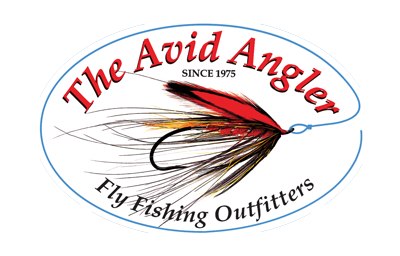Corbett Lake, Merritt BC
CORBETT LAKE, MERRITT BC
Location: Corbett Lake, Merritt BC
Dates: Best May through September
Price:
Extras: Transportation (250 miles from Seattle), tolls ($10 both ways), Canadian fishing license, alcohol, lunch and Corbett Lake staff tips (generally 10% of nightly rate).
Trip Host: Staff Member of The Avid Angler
Corbett Lake is nestled in the Okanagon range just 10 miles to the south of Merritt BC. It is a beautiful lake with rainbows averaging 17" to 21" with occassional fish in the 8 pound and up class. There are extensive flats around the perimeter and the sight fishing and dry fly fishing can be spectacular.
Peter McVey, a European trained chef, is the proprietor and each day culminates with a fabulous 4 course dinner. Lodging is in comfortable, but rustic cabins as pictured on this page. Running water, kitchen amenities and a warm shower accompany each cabin.
We will depart Seattle on Friday morning to arrive at the lake at lunchtime. Dinner is generally at 7pm so a full afternoon of fishing is in order. Departure on Sunday is at your discretion, but it is possible to fish the lake for the whole day if you desire.
Corbett Lake rainbows respond to all the variety of lake techniques with chironomid fishing and sight fishing being the primary methods. The fish are healthy and they generally make a good accounting of themselves when hooked. The chance for a fish of 10 pounds or more is realistic as numerous bruisers cruise the shallows and dropoffs with the average sized fish.
Please contact us at [email protected] or call 877-347-4874 for more details.
REPORTS:
Mid-June 2008
A colder spring brought some different options for the group this year as water levels were a little higher and weed growth was slower. The combination allowed anglers to sneak the narrow mouth of a sheltered bay that in previous years had been closed off by high weeds.
In addition to shutting off some gusty winds, the bay provided some good chironomid hatches and some big fish. The chironomids were in different colors and sizes, but size 14 black and brown with silver or copper ribs worked very well.
In previous years, the callibaetis mayfly hatch was the most reliable hatch, but it wasn't as strong this year. There was a hatch around 1:30 or 2 p.m., but it didn't cover the entire lake. It was spotty and stronger in different areas. The mayfly was more slate gray or charcoal in color than in many lakes, so it helped to use a permanent marker to darken the dry flies, In later morning, mayfly nymphs were also effective.
In addition to the mayfly hatch, (size 14 or 12) there was also a hatch of smaller chironomids in the early afternoon that attracted a lot of fish on dry flies. Several guests reported catching the largest trout they had ever caught on a dry during the trip. Many were using a very small parachute Adams (Size 18). Even though the hatch was of chironomids, the very small mayfly pattern seemed to work well. The key seemed to be to cast to a lot of fish until you found one that didn't insist on a perfect imitation.
When there wasn't a hatch, anglers found a lot of different flies that worked.
As in past years, a white rabbit leech was an absolute must. It was particularly effective when fished along the shoreline near sunken trees and weed growth.
Damsel nymphs worked a little and a few were hatching. Ditto for dragonfly nymphs.
Mike Benbow
September 21-23, 2007 - Corbett Lake Country Inn is a comfortable restful environment that seems to embrace a simpler time. After you cross the imaginary line into Canada and travel the beautiful Coquihalla Pass from Hope to Merritt, you gain the sense of departure from the hustles of home. Cell phone calls are now a dollar a minute, so you finally have a reason to not answer that phone. Calls can be short, and fishing time will be plenty.
After arriving at the lodge, you are greeted by the friendly staff and shown your accommodations. As soon as you can, get yourself on the water and begin to take in the surroundings. The first being the "pet fish" at the end of the dock. They are huge and provide a cleaver tease for your first day. The second might be the hills in the distance that glow in the fading autumn sunlight. Then its time to focus on your gear, knots and game plan.
On our outing, the best technique was the one you focused upon. We had guys relentlessly throwing and twitching dry flies, dragging leaches or fishing chironomids. Best patterns were a white leech stripped slowly, or an olive rubberlegs dryfly pattern. The dryfly pattern was sold at the Powder Keg in Merritt, BC as the "California Blond" and at Avid Angler as the "Half-Down Skwala." Whatever it was called, it worked. Other large olive flies with rubber legs did the trick, from a bullet head skwala to large green mayfly patterns. Really anything that stayed on top when twitched, had good movement would bring fish to the surface.
The streamer fisherman found that working the drop-offs with as sinking line, or floating line in the shallows proved effective. Small olive leaches (size 12-14), yellow and white leach patterns worked when you systematically covered the ledges. Either working them from shallow to deep, or deep to shallow seemed to work. The boats were easily anchored in the shallows and casting into the tullies or into the drop-offs would produce fish. Chironomids could be fished shallow (3-5 feet under and indicator) or deep off the drop-offs (up to 26 feet). Chromies (10-12) and blood worms (8-10) were the patterns of choice.
Day two was really when everyone defined what they were doing and stuck with it. The highlight was an eight pound fish on a four weight from a dryfly. The weather was all over, which made the fishing difficult. There were a few periods where the wind and rain forced a few to the cabins, while others fished until dinner was served. Being prepared for the weather proved to be wise.
The accommodations are clean and well kept. Rental boats are well used and the one's in best shape were secured first thing in the morning. Anchors were a bit cumbersome, from a concrete-filled coffee can to a cinderblock. However, the food was great. Meals were timely and well prepared. Everything was cooked perfectly and wonderfully seasoned. From prime rib to pork loin, Peter McVey knows how to prepare food. Peter is the chef and the man in charge. He checks you out on the last day with a handshake, and is available outside of a well-earned afternoon nap.
By the last day, you could tell, the weather was turning. The morning was cool, but you had the sense that mother nature was settling down. By lunchtime most had started their journey back home, but the determined few stuck it out and had the best fishing of the trip. From noon to late afternoon the healthier, more productive fish moved into the prime feeding areas (i.e. flats, tullies and bank structure). Again on a dryfly, the last fish of trip taken in front of the tullies across from the boat launch. This fish measured 28.5". Oh yeah.
Report submitted by trip host, Ryan Smith of The Avid Angler
JUNE 2007 - Weather was overcast and occasionally stormy and rainy during out mid-June trip, but that didn't seem to affect the fishing.
The only real hatches seemed to come around 2 p.m. in the afternoon, when Callibaetis mayflies came off at the same time as a size 16 chironomid. There was about an hour and a half each day of reliable dry fly fishing, either with a size 14 mayfly or the smaller chironomid.
We also tried a size 16 Adams with good success under the belief that the rainbows were hitting the fly for either bug. Mayfly nymphs, such as pheasant tails, were also successful.
One observation is that the mayflies here are darker gray, more of a charcoal, than you may find elsewhere. It doesn't hurt to carry a black permanent marker such as a Sharpie to give your lighter gray flies a bit of a touchup.
Our arrival on Friday afternoon put us right into the hatch, which seemed to be in most of the shallower feeding areas around the lake. The fish were in excellent shape, fat and strong with beautiful colors. Most of the fish were from 17 to 20 inches. But there were some big ones taken in the group, with reports of an 8-pounder and a 16-pounder landed and released.
In nonhatch times, the best success seemed to be covering the shorelines and reedy areas carefully and moving often to find the fish. We arrived at Corbett after the damsel hatch was over for the year, but the fish would still take an occasional olive damsel nymph cast into the reeds.
We also had success using black chironomid pupas, size 14 or 16, suspended from a strike indicator to be six to 12 inches above the weeds.
The real sleeper fly, however, continued to be a white rabbit leech. When nothing was happening, you could move along the shorelines and cast the fly right to shore, pulling it back as fast as you can in four-inch strips.
The fish didn't seem to really want the fly; the strikes were almost nonexistent. They would softly close their mouths on the fly as if to see what it was. Instead of feeling the fish, you would just watch the fly travel rapidly just under the surface. When you couldn't see the fly, you would know a fish had taken it and that you could now set the hook. The technique caught fish from sunup to sundown. Lots of them. There are no minnows in the lake, but the trout can't seem to help themselves.
I tried several versions of this fly and Brita's was by far the best. I kept borrowing them one at a time, which was a huge mistake. On our last day of the trip my biggest fish of the three days grabbed one, wrapped me around a log and broke off, all right in front of my eyes. And then I didn't have any more white leeches.
Report submitted by trip host, Mike Benbow of The Avid Angler
September 2006 - Fall fishing in September this year was under spectacular blue and sunny skies, which made things a little tougher than they were in early summer. There wasn't much of anything hatching, but if you could find the right bug, the takes were aggressive and often.
What seemed to work well was something small and green. I tried size 16 scuds, size 14 immature damsel nymphs and small baetis nymphs all with success. The fish were cruising and seeking food, and casting in the shallows or suspending the flies under a strike indicator seemed to work OK.
Also consider bloodworms and dragon fly nymphs in deeper water.
I think there were fish on all of the shoals, but we did our best in the shallow and reedy areas in the far end of the lake and in the little bay immediately across from the lodge. Look for paths among the reeds that are a little deeper, the fish follow them when moving from one area to another and action can be steady.
Report submitted by trip host, Mike Benbow of The Avid Angler










